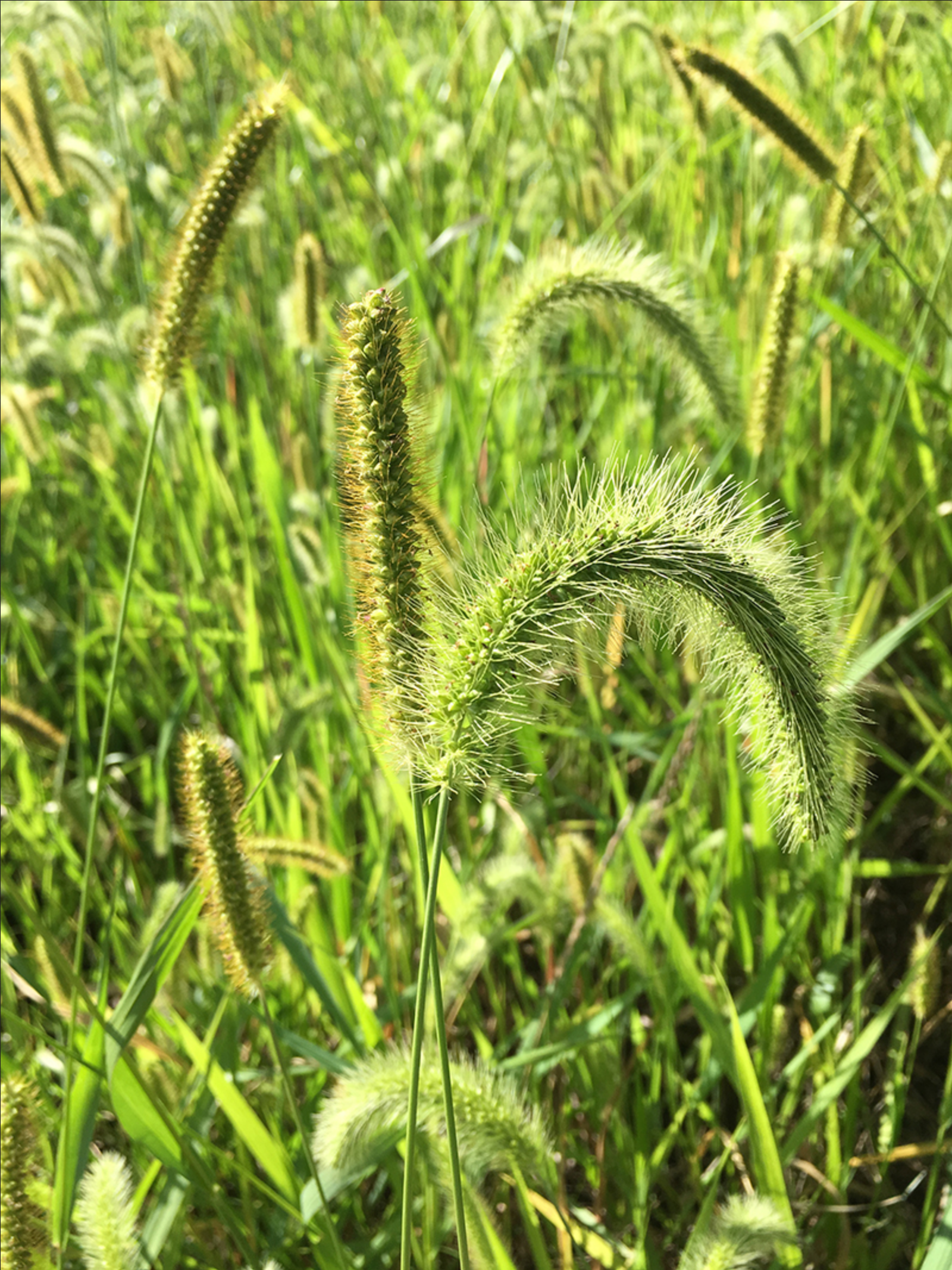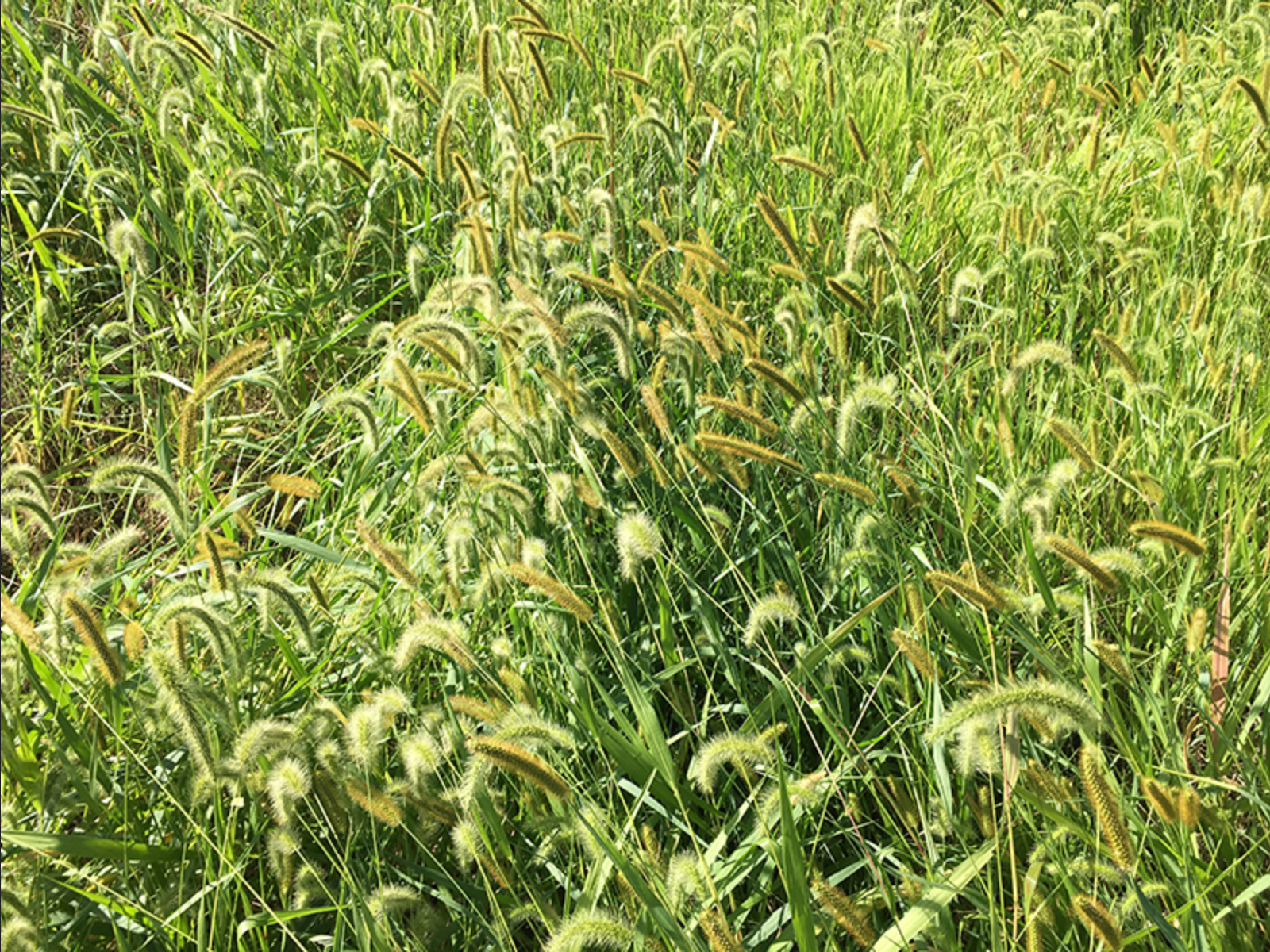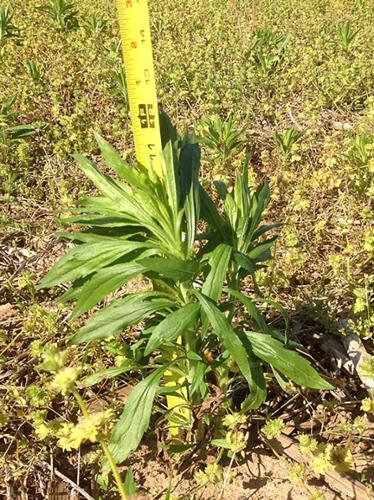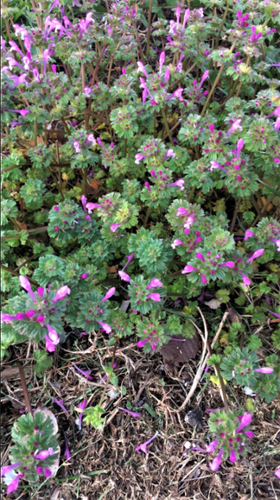Picture of the Week
February 21, 2022
Foxtails
Marcelo Zimmer, Weed Science Extension Specialist
Department of Botany and Plant Pathology, Purdue University
Foxtails are summer annual grasses that emerge in late spring and throughout the summer. They grow as a loose clump, ranging from 1 to 3 feet in height and reproduce only by seed. There are three common foxtail species that occur in the Midwest: giant foxtail (Setaria faberi); yellow foxtail (Setaria pumila); and green foxtail (Setaria viridis). All three species have a hairy ligule, no auricles, and produce the characteristic elongated seedhead (spike) that resembles a fox's tail. These species can be found in mixed patches in the same field. Giant foxtail has wider leaves and can be identified by the presence of dense short hairs on the upper surface of the leaf blade, also the seedhead droop in an arch shape, unlike the other foxtails. Yellow foxtail has very long hairs on the upper surface of the leaf blade near the collar region only, and the seedhead is compact with yellow bristles. Green foxtail is mostly hairless and the seedhead has green or purple-tinted bristles.
Click image to enlarge
Foxtails can grow in moist or dry soils and tolerate a wide range of environmental conditions; thus, these weeds can be found in several habitats, such as row crops, pastures, turf, gardens, roadsides, ditches, or other disturbed areas. The Weed Science Society of America (WSSA) ranked foxtails (giant, yellow, and green combined) as the 2nd most common weed in broadleaf crops, fruits, and vegetables and the 4th most common weed among all grass crops, pasture, and turf.
Control of foxtails is straightforward in broadleaf crops because several effective preemergence and postemergence herbicides are available. However, foxtail populations with herbicide resistance to ACCase inhibitors [Site of Action (SOA) #1], ALS inhibitors (SOA #2), Photosystem II inhibitors (SOA #5), and Microtubule Inhibitors (SOA # 3) have been documented in some areas of the United States. In grass crops, however, herbicide options are more limited due to crop susceptibility; thus, foxtails are ranked as the 6th most troublesome to control weeds among all grass crops, pasture, and turf.
References
Heap I (2019) The International Survey of Herbicide Resistant Weeds. Available: http://www.weedscience.org. Accessed February 20, 2019
Van Wychen L (2016) 2016 Survey of the Most Common and Troublesome Weeds in Broadleaf Crops, Fruits & Vegetables in the United States and Canada. Weed Science Society of America National Weed Survey Dataset. Available: http://wssa.net/wp-content/uploads/2016-Weed-Survey_Broadleaf-crops.xlsx
Van Wychen L (2017) 2017 Survey of the Most Common and Troublesome Weeds in grass crops, pasture and turf in the United States and Canada. Weed Science Society of America National Weed Survey Dataset. Available: http://wssa.net/wp-content/uploads/2017-Weed-Survey_Grass-crops.xlsx
UC IPM (2019) Foxtails (Setaria spp.). Available: http://ipm.ucanr.edu/PMG/WEEDS/foxtails.html. Accessed February 20, 2019
See these other articles by Marcelo Zimmer:
Fall Emerging Marestail Henbit and purple deadnettle






